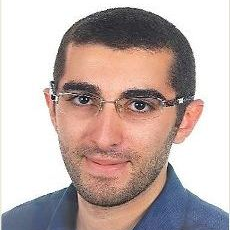Energy Harvesting Technologies and Applications for the Internet of Things and Wireless Sensor Networks (Volume II)
A special issue of Sensors (ISSN 1424-8220). This special issue belongs to the section "Physical Sensors".
Deadline for manuscript submissions: closed (30 November 2023) | Viewed by 16451
Special Issue Editors
Interests: energy harvesting; vibration converters; piezoelectric transducers; magnetoelectric converters; electromagnetic converters; autonomous sensor systems
Special Issues, Collections and Topics in MDPI journals
Interests: energy harvesting; nanocompsoites; design of sensors and sensors systems; impedance spectroscopy
Special Issues, Collections and Topics in MDPI journals
Interests: sensors; transducers; energy harvesting; MEMS; NEMS; fluxgate magnetometers; green and biodegradable sensors
Special Issues, Collections and Topics in MDPI journals
Special Issue Information
Dear Colleagues,
The widespread installation of wireless sensor systems facilitates the evolution of new technology trends such as the Internet of Things (IoT), which in turn have the potential to revolutionize numerous fields, including predictive maintenance, industry automation, and big data collection. Therefore, there is a growing demand for the maintenance-free deployment of wireless sensors by integrating energy harvesting technologies to eliminate costly cable installations and battery replacements.
Energy can be harvested from various sources, such as light, electromagnetic waves, thermal, and mechanical vibration based on photoelectric, piezoelectric, electromagnetic, pyroelectric, and triboelectric effects, among others. Research on energy harvesting technologies covers a variety of topics from fundamental research on functional materials and structures to system-level integration.
The aim of this Special Issue is to gather the latest original developments in energy harvesting technologies and applications in the Industrial Internet of Things.
Specifically, this Special Issue will cover, but not be limited to, the following areas:
- Novel energy harvesting principles and device structure designs;
- Energy harvesting transducers (e.g., thermoelectric, photovoltaic, electromagnetic, piezoelectric, triboelectric);
- Flexible harvesters and nanogenerators;
- Energy harvesting communication;
- Self-powered integrated/embedded sensor systems;
- Wireless sensor networks powered by energy harvesting;
- Surveys and original contributions about the feasibility of energy harvesting in real applications.
Dr. Slim Naifar
Prof. Dr. Olfa Kanoun
Prof. Dr. Carlo Trigona
Guest Editors
Manuscript Submission Information
Manuscripts should be submitted online at www.mdpi.com by registering and logging in to this website. Once you are registered, click here to go to the submission form. Manuscripts can be submitted until the deadline. All submissions that pass pre-check are peer-reviewed. Accepted papers will be published continuously in the journal (as soon as accepted) and will be listed together on the special issue website. Research articles, review articles as well as short communications are invited. For planned papers, a title and short abstract (about 100 words) can be sent to the Editorial Office for announcement on this website.
Submitted manuscripts should not have been published previously, nor be under consideration for publication elsewhere (except conference proceedings papers). All manuscripts are thoroughly refereed through a single-blind peer-review process. A guide for authors and other relevant information for submission of manuscripts is available on the Instructions for Authors page. Sensors is an international peer-reviewed open access semimonthly journal published by MDPI.
Please visit the Instructions for Authors page before submitting a manuscript. The Article Processing Charge (APC) for publication in this open access journal is 2600 CHF (Swiss Francs). Submitted papers should be well formatted and use good English. Authors may use MDPI's English editing service prior to publication or during author revisions.
Keywords
- wireless sensor networks
- energy harvesting
- Industrial Internet of Things
- self-powered sensors
- ernergy harvesting communication








